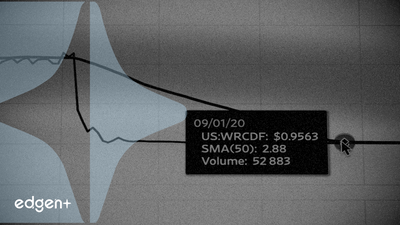Related News

Marathon Digital's Bitcoin Transfer Spurs Market Volatility Amid Liquidity Debates
## Marathon Digital Transfers Bitcoin Holdings to Exchanges Amid Broader Crypto Market Fluctuations U.S. equities saw varied performance on November 5, 2025, but the cryptocurrency market experienced notable volatility following a significant transfer of **Bitcoin (BTC)** by **Marathon Digital Holdings (MARA)**. The **Bitcoin** price slipped approximately 5%, with **Ethereum (ETH)** dropping 8%, as investors reacted to both company-specific actions and broader macroeconomic liquidity shifts. ## The Event in Detail: Marathon Digital's Strategic Move and Market Impact On November 5, 2025, **Marathon Digital (MARA)** executed a transfer of 2,348 **Bitcoin**, amounting to approximately $236 million, to four prominent institutional platforms: **Coinbase Prime**, **FalconX**, **Galaxy Digital**, and **Two Prime**. This transaction was flagged by **Arkham Intelligence**. Concurrently, **BlackRock** also moved over $1 billion in **BTC** and **ETH** to **Coinbase** within the preceding five-day period. Following these substantial transfers, the price of **Bitcoin** declined by roughly 5%, and **Ethereum** experienced an 8% reduction. Despite the broader market dip, **Solana (SOL)** Exchange Traded Funds (ETFs) reportedly absorbed fresh capital during this period. While **MARA** currently retains substantial holdings of approximately $1.68 billion in **Bitcoin**, the movement of assets to exchanges often precedes liquidation or rebalancing of large positions. This action by **MARA** reflects a shift in its treasury strategy. The company has ceased its 16-month practice of "hodling" all newly mined **Bitcoin**, selling approximately half of its September production. This adjustment comes amidst increasing operational costs and challenging mining conditions, characterized by heightened network difficulties and a reduction in transaction fee income, which have collectively eroded profitability for major mining operators. ## Analysis of Market Reaction: Liquidity Dynamics and Miner Behavior The immediate market reaction to **MARA**'s transfer was one of caution, with some segments of the crypto community anticipating a "tsunami of selling." This sentiment, combined with the broader financial landscape, contributed to the observed price contractions in **Bitcoin** and **Ethereum**. A significant macroeconomic factor influencing recent market liquidity has been the substantial increase in the U.S. Treasury General Account (TGA), which reached approximately $965 billion. This accumulation of cash within the Treasury has effectively withdrawn liquidity from the broader markets. Analysts from **LondonCryptoClub** noted that "When the Treasury builds cash in the TGA, it removes liquidity that would otherwise circulate through the economy." This tightening of liquidity is also evident in falling bank reserves and rising funding costs, with the Secured Overnight Financing Rate (SOFR) widening and the Federal Reserve's Standing Repo Facility (SRF) seeing its highest utilization ($10 billion in loans) since 2021. ## Broader Context and Implications: The Role of Monetary Policy and Historical Precedent Despite the immediate market pressures, prominent figures like Arthur Hayes anticipate a strong resurgence in **Bitcoin** and broader cryptocurrency markets. Hayes attributes this potential rally to expected U.S. monetary expansion, foreseeing that increasing Treasury debt and the Federal Reserve's expanding balance sheet, particularly through its SRF, will inject substantial liquidity. Hayes stated, "The growth of the Fed's balance sheet is dollar liquidity positive, which ultimately boosts the price of Bitcoin and other cryptocurrencies." He maintains a long-term forecast that **Bitcoin** could reach $1 million, underpinned by ongoing fiscal expansion, monetary debasement, and growing global demand for hard digital assets. Historical data supports the notion that TGA movements can significantly impact **Bitcoin** prices. Analyst Raoul Pal suggests that the current tight liquidity, exacerbated by the TGA, may ease in November as government spending resumes and the Federal Reserve potentially concludes its balance sheet reduction efforts. Past instances have shown a clear correlation: a $50 billion drop in the TGA in 2018 coincided with a 19% rise in **Bitcoin**, and an $80 billion drawdown in 2022 saw a 22% increase in price. Commentator Satoshi Musk shares a similar outlook, projecting that a much larger release from the TGA could propel **Bitcoin** up by as much as 38%, potentially reaching $152,000. ## Expert Commentary > "While some traders warned of a potential 'tsunami of selling,' others viewed the transfer as a strategic risk mitigation move." — **Crypto Community Observers** > "The growth of the Fed's balance sheet is dollar liquidity positive, which ultimately boosts the price of Bitcoin and other cryptocurrencies." — **Arthur Hayes** > "This tight liquidity may ease in November when government spending resumes and the Federal Reserve ends its balance sheet reduction." — **Raoul Pal** > "When the Treasury builds cash in the TGA, it removes liquidity that would otherwise circulate through the economy." — **Analysts at LondonCryptoClub** ## Looking Ahead: Monitoring Liquidity and Policy Shifts The cryptocurrency market remains at a critical juncture, influenced by a confluence of on-chain miner activities and macro-financial forces. Key factors to monitor in the coming weeks include the Federal Reserve's monetary policy decisions, particularly concerning its balance sheet and any adjustments to interest rate guidance. The trajectory of the U.S. Treasury General Account and the resumption of government spending will be crucial indicators of future market liquidity. Furthermore, the evolving strategies of major **Bitcoin** miners, like **Marathon Digital**, in response to operational economics and market volatility, will continue to shape supply dynamics. These elements collectively will determine the near-term and long-term outlook for **Bitcoin** and the broader digital asset ecosystem.

Veracyte Reports Strong Third Quarter 2025 Financial Results, Raises Full-Year Outlook
## Veracyte Reports Strong Third Quarter 2025 Financial Results, Raises Full-Year Outlook ## Q3 2025 Performance Exceeds Expectations **Veracyte, Inc. (NASDAQ: VCYT)** announced robust financial results for the third quarter of 2025, surpassing analyst expectations for both earnings and revenue. The molecular diagnostics company reported **earnings per share (EPS) of $0.51**, significantly beating the consensus estimate of $0.32 by $0.19. Quarterly **revenue totaled $131.87 million**, exceeding the analyst forecast of $124.62 million by $7.02 million. This represents a 13.8% increase in revenue compared to the same quarter last year, where EPS stood at $0.33. ## Operational Strengths Drive Revenue Growth The strong financial performance was largely driven by growth in Veracyte's core testing business. **Testing revenue reached $127.8 million**, marking a 17% year-over-year increase. Key products contributing to this growth include the **Decipher** prostate test, which saw a 26% increase in volume, and the **Afirma** thyroid nodule test, with a 7% increase in revenue. Total testing volume for the quarter was approximately **43,700 tests**, representing a 19% increase over the prior year period. The company also achieved a record **adjusted EBITDA margin of 30%**, representing a 650 basis point improvement from the prior year, with adjusted EBITDA reaching $39.7 million. Cash from operations was $44.8 million, and cash and cash equivalents totaled $366 million. ## Market Reaction and Broader Financial Context Despite the strong earnings beat and raised guidance, **Veracyte's stock (VCYT) experienced a decline**. Shares fell 0.93% to $36.11 in regular trading and continued to drop by 4.53% in aftermarket trading, closing at $34.80. This reaction may reflect broader market volatility or investor profit-taking following a period of strong performance. The company currently holds a **market capitalization of $2.84 billion** and trades at a **price-to-earnings (P/E) ratio of 109.46**. Its **return on equity (ROE) is 6.07%**, and its **net margin stands at 5.50%**. The stock's **beta of 2.11** indicates a higher volatility compared to the broader market. ## Outlook and Strategic Initiatives Veracyte has raised its financial guidance for the full year 2025, underscoring confidence in its continued growth trajectory. The company now expects **total revenue to be between $506 million and $510 million**, up from the previous range of $496 million to $504 million. Testing revenue guidance has also been increased to $484 million to $487 million. The adjusted EBITDA margin guidance for the year is now anticipated to **exceed 25%**, an improvement from the prior guidance of 23.5%. The company plans accelerated investments in its breast cancer testing channel, minimal residual disease (MRD) research, and the Prosigna launch. Veracyte is actively developing its whole genome-based **TrueMRD platform**, with initial proof of concept in muscle-invasive bladder cancer targeted for launch with reimbursement in the first half of 2026. Management emphasized that the clinical utility of tests like Decipher is gaining increasing recognition among physicians across various risk categories. ## Potential Future Considerations While Veracyte's Q3 2025 results demonstrate robust operational and financial health, investors will continue to monitor several factors. The company's ability to successfully integrate and launch new platforms like TrueMRD, navigate competitive pressures in the molecular diagnostics space, and adapt to potential regulatory changes will be crucial. Future economic conditions and their impact on healthcare spending could also influence testing demand. The sustained momentum in testing volumes and the realization of benefits from strategic investments will be key indicators for Veracyte's performance moving forward.

Texas Instruments Shares Decline Following Subdued December Quarter Outlook
## Texas Instruments Shares Decline Following Subdued December Quarter Outlook **Texas Instruments (TXN)** shares experienced a significant decline of more than **8%** in after-hours trading following the release of its third-quarter results and a cautious forecast for the upcoming December quarter. The semiconductor company's guidance fell below Wall Street expectations, raising concerns about future revenue and profitability. ### Q3 Performance and Q4 Guidance Misses Estimates For the third quarter, **Texas Instruments** reported revenue of **$4.74 billion** and earnings per share of **$1.48**, representing a **14%** year-over-year increase in revenue. The company's analog business segment demonstrated strength, generating **$3.73 billion** in revenue, an increase of **16%** year-over-year, and surpassing expectations. However, the embedded processing segment underperformed, recording **$709 million** in revenue. The primary driver of the post-earnings sell-off was the company's guidance for the fourth quarter. **Texas Instruments** projected earnings to be between **$1.13** and **$1.39** per share and revenue in the range of **$4.22 billion** to **$4.58 billion**. These projections largely missed Wall Street's consensus estimates, which had anticipated revenue around **$4.5 billion**. Furthermore, analysts, such as Jefferies' Curtis, highlighted that the implied gross profit margin from the guidance range suggested a **55%** margin for the fourth quarter, notably below the **57.6%** consensus expected by Wall Street. The company attributed this conservative outlook to "a slower-than-typical recovery" influenced by ongoing macroeconomic and geopolitical concerns. ### Market Reaction and Valuation Context The immediate market reaction underscores investor sensitivity to future guidance, particularly regarding profitability. The discrepancy between **Texas Instruments'** forecast and analyst expectations triggered a swift repricing of the stock. Currently, **Texas Instruments** trades at a Price-to-Earnings (P/E) ratio of **33.12**, which is above its historical median of **22.63**. Its Price-to-Sales (P/S) ratio stands at **9.94** compared to a median of **8.02**. These elevated valuation metrics suggest that investors were particularly sensitive to any signs of slowing growth or margin compression, as the stock was already priced for robust performance. ### Broader Semiconductor Sector and Earnings Trends **Texas Instruments'** subdued outlook arrives at a time when the broader semiconductor sector is experiencing varied fortunes. While certain segments, particularly those driven by artificial intelligence, have seen explosive growth—exemplified by companies like **NVIDIA Corp. (NVDA)** which briefly surpassed a **$5 trillion** market capitalization in late September 2025—the sector has also been subject to significant volatility, including widespread sell-offs and concerns over "valuation fatigue." For instance, **NVDA** saw a **16%** decline over four trading sessions in early November 2025, and **Advanced Micro Devices (AMD)** shares also tumbled despite strong Q3 2025 revenue. Even **Broadcom (AVGO)**, which reported substantial AI revenue growth, experienced declines. However, **Texas Instruments'** challenges appear to stem more from general industrial and macroeconomic softness rather than the speculative dynamics of the AI boom. The company's forecast annual revenue growth rate of **7.21%** significantly lags the US Semiconductors industry's average forecast of **63.94%**. Similarly, its forecast annual earnings growth rate of **10.63%** is well below the industry average of **49.04%**. This divergence suggests that while some parts of the semiconductor market are flourishing, traditional segments are contending with more conventional demand headwinds. The general trend of declining earnings estimates across the market in recent months, impacting the **S&P 500**, provides a broader context, indicating that **Texas Instruments** is not alone in facing downward revisions, though its specific guidance was particularly stark. ### Analyst Perspectives and Future Outlook Despite the recent drop, the consensus among 19 Wall Street analysts covering **Texas Instruments (TXN)** remains cautiously optimistic, with the majority recommending a "Buy" or "Strong Buy." The average price target is set at **$203.79**, suggesting a potential upside of **27.88%** from the current share price (as of October 22, 2026 forecast). The highest price target stands at **$255.00**, while the lowest is **$150.00**. However, analysts' earnings forecasts reflect the challenges. For 2025, **Texas Instruments**' revenue is projected at approximately **$16.24 trillion**, with earnings around **$5.03 billion**. The company's own cautious stance on a "slower-than-typical recovery" due to global economic and geopolitical uncertainties suggests that investors should anticipate continued pressure. Should earnings guidance continue to be revised downwards, or if margins fail to stabilize, the market's willingness to pay a premium for **TXN** shares could diminish, potentially leading to further multiple compression. Monitoring upcoming economic reports and any shifts in the company's demand outlook will be critical for investors.
